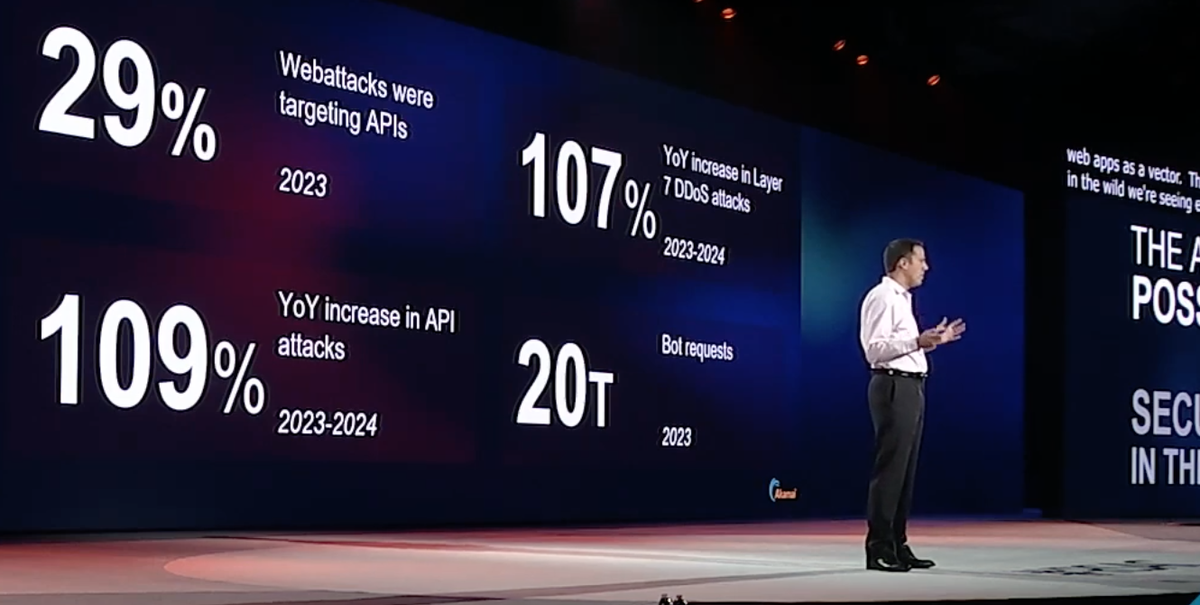When you purchase through links on our site, we may earn an affiliate commission. Here’s how it works.
Akamai has warned that apps and APIs are bearing the brunt as threat actors pivot to living off the land
In a hard-hitting keynote at this year’s RSA Conference, Boaz Gelbord, senior vice president and CSO at Akamai, sounded the alarm over the rising tide of attacks targeting applications and their underlying infrastructure.
Threat actors are increasingly leveraging legitimate tools and components within organizations to carry out their nefarious activities, a tactic known as “living off the land,” Gelbord warned.
Citing Akamai’s latest threat intelligence data, Gelbord revealed a staggering 48% year-on-year increase in web attacks, with 29% targeting APIs. Even more alarming was the 109% surge in API attacks, a trend Gelbord attributed to the challenges of inventorying and securing these critical interfaces.
“It’s hard to inventory APIs. You kind of know what your public-facing websites are, and probably have processes internally for setting those up. You know, they’re customer-facing or they’re user-facing,” he said.
“It’s harder for an organization to even know what all of its APIs are that are out there. And it’s harder to secure them.”
Gelbord also highlighted the risk posed by compromised open source components, citing the recent XZ utils vulnerability as a turning point. In this case, a widely used open source utility had been hijacked by a malicious entity, enabling remote code execution.
“This is probably the most stunning example of how those types of utilities can pose risks,” Gelbord warned.
Receive our latest news, industry updates, featured resources and more. Sign up today to receive our FREE report on AI cyber crime & security – newly updated for 2024.
“Luckily, there was an eagle-eyed engineer over, I think, at Microsoft who spotted this and saw some performance differences and how this utility was performing and managed to kind of alert folks before this got out into general distribution, but we don’t know how many more of those are out there lurking in the wild.”
Gelbord emphasized the importance of organizations adopting a risk-based approach to secure their applications, advocating for a strong understanding of how their threat models align with the various components of their applications, from code to infrastructure.
He also underscored the criticality of multivendor interoperability and the integration of compliance efforts with technical security programs.
Concluding his keynote, Gelbord stressed the transformative potential of AI in reshaping security models, particularly in areas like identity, user authorization, security operations, and monitoring.
“AI is going to fundamentally change a lot of pieces of our overall security model,” he said.
“The most obvious spaces, which we mentioned earlier, are identity and user authorization. This is moving very fast, but also in different places like how we do our security operations and how we do our security monitoring.”
Rene Millman is a freelance writer and broadcaster who covers cybersecurity, AI, IoT, and the cloud. He also works as a contributing analyst at GigaOm and has previously worked as an analyst for Gartner covering the infrastructure market. He has made numerous television appearances to give his views and expertise on technology trends and companies that affect and shape our lives. You can follow Rene Millman on Twitter.
Microsoft security boss warns AI insecurity ‘unprecedented’ as tech goes mainstream
Telco cloud investment to reach $200 billion by 2028 amid surging network demands
IT Pro is part of Future US Inc, an international media group and leading digital publisher. Visit our corporate site.
©
Future US, Inc. Full 7th Floor, 130 West 42nd Street,
New York,
NY 10036.
